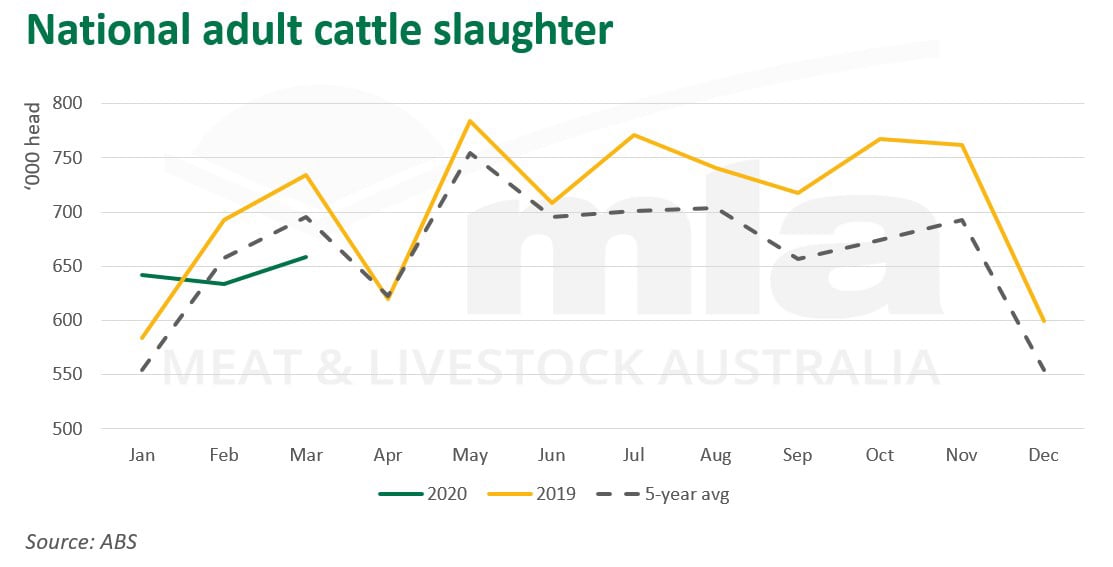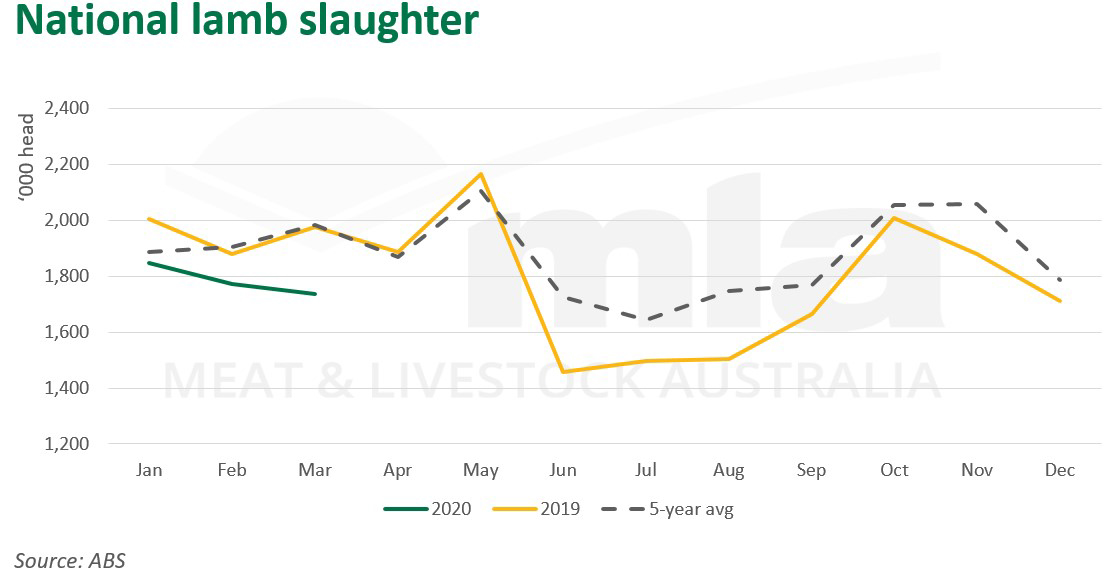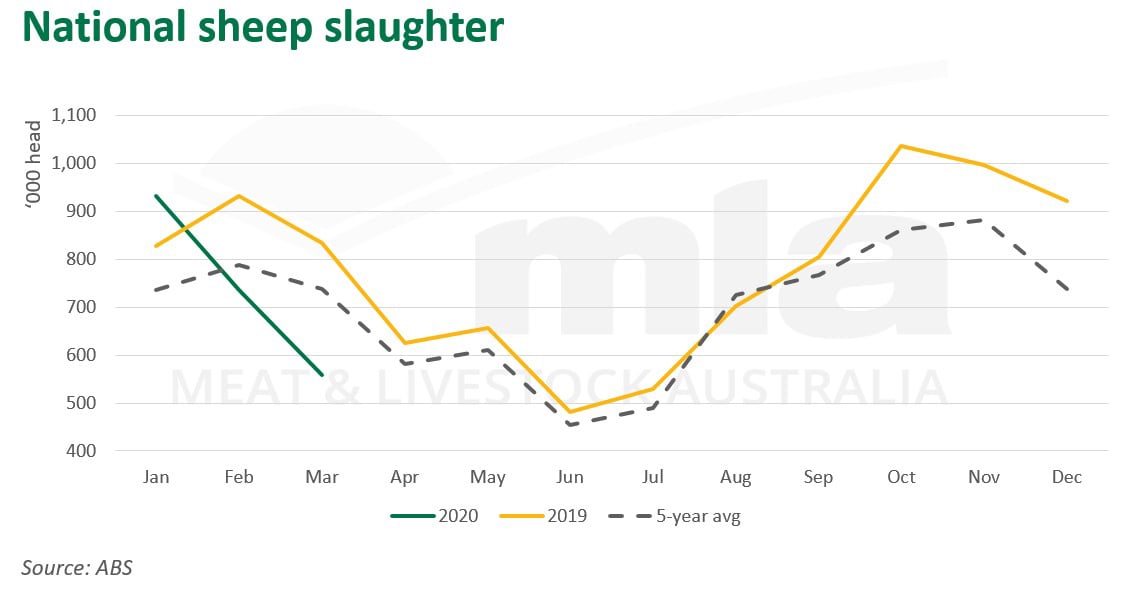Cattle and sheep markets: March summary
Key points
- Female cattle turnoff steady at 52% of total adult cattle slaughter.
- Lamb slaughter below year-ago levels as supplies tighten.
- Sheep slaughter significantly back year-on-year due to high turnoff in 2018 and 2019.
Cattle slaughter and production
National adult cattle slaughter eased 10% from year-ago levels in March to 658,758 head. New South Wales reported the largest year-on-year decline, easing 17% to 136,934 head, with Queensland slaughter easing 15% from 2019 levels to 289,490 head, while Victoria remained stable. South Australia and Tasmania declined 4% and 3% respectively, while Western Australia increased 7% year-on-year to 39,878 head.
The female portion of slaughter held steady at 52% for the month, back from 58% seen in March 2019. With the elevated destocking of breeders throughout 2019, it is reasonable to assume a high level of female cattle remained in feedlots during the first quarter. However, there is the expectation for female slaughter to ease in the coming months, as producers retain breeding stock, given the positive winter outlook.
In March, national average carcase weights increased 11kg year-on-year to average 292kg. Victoria saw the largest improvement from year-ago levels, increasing by 21kg, followed by Tasmania and New South Wales up 19kg and 15kg respectively. Queensland and South Australia carcase weights increased by 6kg, while Western Australia increased 5kg from March 2019. The stark contrast in feed availability compared to this time last year has supported overall carcase weights. Declining numbers of cattle on feed in the first quarter of 2020 has not been enough to offset carcase weight gains, despite average weights easing slightly from February levels.
Total beef production was reported at 192,183 tonnes carcase weight (cwt), nearly 14,000 tonnes cwt less compared to March 2019. The largest decline was seen in Queensland, with production easing 12,500 tonnes cwt year-on-year, while New South Wales reported a decline of almost 6,000 tonnes cwt. Victoria, on the other hand, increased by 3,600 tonnes cwt from year-ago levels, with small increases seen in Western Australia and Tasmania.
The supply of finished cattle is expected to tighten as the year progresses, underpinning MLA’s recent forecast for a 16% decline in beef production, to 2.05 million tonnes cwt in 2020.

Lamb slaughter and production
Lamb slaughter eased 12% from year-ago levels to 1,737,576 head in March, a flow on effect from reduced marking rates and higher breeding stock turnoff seen in 2019. Despite a decline in slaughter, lamb carcase weights improved 5% year-on-year to 24.7kg/head in March, buoyed by the inclusion of supplementary feeding and lot feeding lambs, particularly in New South Wales and Victoria. Heavier average carcase weights were not enough to offset the 8% decline in lamb production year-on-year, totalling 42,852 tonnes cwt in March.

Sheep slaughter and production
National sheep slaughter for March reported a substantial year-on-year decline, back 33% to 558,443 head. Ongoing dry conditions in 2019 saw elevated levels of breeding stock offloaded. However, a reprieve from dry conditions earlier in the year and a positive weather outlook for winter has seen producers hold onto breeding stock to rebuild flock numbers.
Average sheep carcase weights increased 6% year-on-year, to 24.4kg/head, a slight increase from the beginning of 2020. In line with a decline in slaughter, national mutton production eased 29% from March 2019 to 13,611 tonnes cwt, with Victoria and New South Wales reporting significant year-on-year declines of 3,000 tonnes and 2,000 tonnes cwt respectively.

© Meat & Livestock Australia Limited, 2020



